DECONTAMINATION
Decontamination removes contaminants on the paint surface, including chemicals, microorganisms, or radioactive substances. This may be achieved by chemical reaction, disinfection, or physical removal. It refers to specific action taken to reduce the hazard posed by such contaminants, as opposed to general cleaning.
STEP 1: PRE-WASH

The wash stage is the most important process in detailing for ensuring a swirl-free paint finish. But, when it comes to adding decontamination of your paintwork into the mix, having an effective pre-wash and contact wash is even more important. The firmly established way to do this is by thoroughly pre-washing with a suitable chemical cleaner, by using Snow Foam (suggested; KCx Gentle Snow Foam), and by the time you rinse, you will have loosened and removed any heavy soiling. After pre-washing, it's onto the contact wash, where you should always carry out a full two-bucket wash before attempting decontamination, even if your car looks clean. As always start with the roof, along with any upward-facing panels, and follow with the front, lower half and finish on the rear.
STEP 2: DETAILED WASH

The detailied wash stage is a process designed to remove the most harmful of ingrained contaminates - sharp metal particles. In many cases, you may not be able to see these minute pieces of metal with the naked eye. And, if this metal is left to build up on the paint surface, it can cause severe oxidation problems down the line. The high temperatures caused by braking friction help these particles to burn so far into the surface of your paint, that they simply can't be removed with a traditional contact wash. The detailed wash stage involves using a product specially formulated for ferrous material removal or Iron Remover (suggested; MenzaPro Iron Xtreme). It can be applied directly to paintwork, as Ferrous deposits are dissolved, they are temporarily highlighted, turning them blood red. Once the reaction has taken place, the deposits can be rinsed away with clean water. In most cases, a single application will be enough to rid the surface of iron particles, but for extremely heavy contamination a second application can be sprayed on and worked into the surface with a microfiber pad. Once this is rinsed away, your paintwork should be free of metal contamination.
STEP 3: TAR AND GLUE REMOVAL 
Some of the most stubborn contaminants you'll find anywhere are tar, adhesive residues, tree sap, rubber, and fuel staining. What most of these contaminants have in common is that they're sticky oil-based stains. To remove them you'll need a strong solvent-based formula, Tar remover (suggested; KCx Teerwasche), to dissolve them enough to allow them to be wiped away. Working in small sections, simply spray on a light spritz of product and wipe over with a clean microfiber as soon as you see the stains start to bleed. You'll see that contaminates will immediately be lifted away by your cloth. Once these contaminates are safely removed, it's essential to rewash the entire car with Lather Shampoo, this is to neutralize any remaining solvent or Iron Out residue left behind. After that, you can dry as normal, and move on to the next step.
STEP 4: CLAYING
Many see claying as something of a dark art, but in reality, it couldn't be simpler. It's the final step in cleansing your paintwork and the general idea is to remove deeply ingrained impurities that, most of the time, you won't be able to see. These include mineral deposits from water, tree sap, and protein deposits from bugs and bird droppings… and that's just the organic stuff. A good quality detailing clay will also remove a good degree of inorganic industrial fallout and paint overspray (suggested; KCx Blue Clay). All this is important because even the smallest particles can eat away at your paintwork if left for long periods. Contamination of this sort builds up over time too, so claying really is an essential step in keeping your paint decontamination free. Always remember to lubricate the surface to be clayed with a proper lubricant (suggested; KCx Clay Spray). At first, you'll feel the resistance the impurities cause, but as they're lifted away from the paint, the surface will become smoother, and the clay will glide more freely. When it takes hardly any effort at all to move the clay across the surface, the panel will be free of impurities, so you can wipe it over with a clean microfiber, and move on to the next step.
CONCLUSION
After fully decontaminating, don't forget that you have essentially removed any pre-applied protective layers. The good news is that your paint surface will now be optimal for wax or sealant bonding, or ready for any level of paint correction from hand to machine polishing.
Refer Chapter 2 for Paint Correction Basics.

